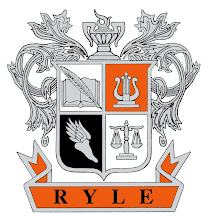NOTE: As we work with our students to ready them for the world that lies beyond their schooling days, are we keeping up with the times? Digital Literacy is a key for success today and our students need to know how to respond to new challenges. The following is from The Oregonian, written by Jerry Ulmer.
Kendrick Bourne had cleaned up his act. No more smoking marijuana, drinking alcohol or partying. And he buckled down in the classroom, too.
But the 6-foot-2 wide receiver knew he had one more very important thing to clean up before college football recruiters would come calling: his Facebook page.
In his first three years at Northeast Portland's Benson High School, Bourne had little regard for what he posted online. And last fall, as he sought a fresh start and pursued a scholarship as a senior at Milwaukie it was coming back to haunt him.
"I was just saying like, 'Just got done smoking,' or 'Just left a party,' or 'Turned up drunk' or something," Bourne said. "Posting pictures of me smoking, just stuff that wasn't cool. It wasn't benefiting me. My coach at Milwaukie was telling me that, but I didn't believe it was true. I really learned that it was affecting me."
Messages sent on a whim on Facebook and Twitter, and on photo apps such as Instagram and Snapchat, can have a far-reaching impact that can affect an athlete's future and create a negative image for a school or program.
"In general, social media is a disaster for athletes," said Michael Abraham, coach for the Team Concept AAU girls basketball program. "In terms of the forum that it's provided, it's abused way more than it has helped. Kids get so much braver and make so many poor decisions because they don't see the immediate accountability for their actions. There's no positive to it."
In Bourne's case, his postings jeopardized a college scholarship.
"I know there were coaches who were worried about it," said Dirk Knudsen, a recruiting analyst for Rivals.com. "I know at least one Division I school that wanted him had expressed some concern, 'What are we getting into?'
"When people ask me, 'Why is this kid getting recruited over that kid?' and there's no apparent reason, I have to advise them that I have seen pictures on some of our top athletes' pages with bongs and alcohol, and n-bombs and f-bombs. What you're telling the school is, 'I don't really care too much about all of this.'"
For college recruiters, whose contact with athletes is limited by NCAA rules, social media can provide a window into an athlete's character. College football programs can't have contact with high school athletes until Sept. 1 of their junior year but can track them on social media.
"The first thing we do is see the film and see the talent, and the second thing we do is get on Facebook or Twitter and follow them, friend request them," said Ryan Gunderson, Oregon State's assistant director of player personnel. "You can tell a lot about a kid right away."
Sometimes, Gunderson said, what the Oregon State staff discovers can be a deciding factor in whether to offer a scholarship.
"How many red flags are going to enter into your vision to say, 'Hey, this talent isn't worth all these red flags,'?" Gunderson said. "A Facebook profile, Twitter profile, can turn that off immediately. If you see pictures of bad stuff or them using bad language, that's an immediate red flag."















No comments:
Post a Comment